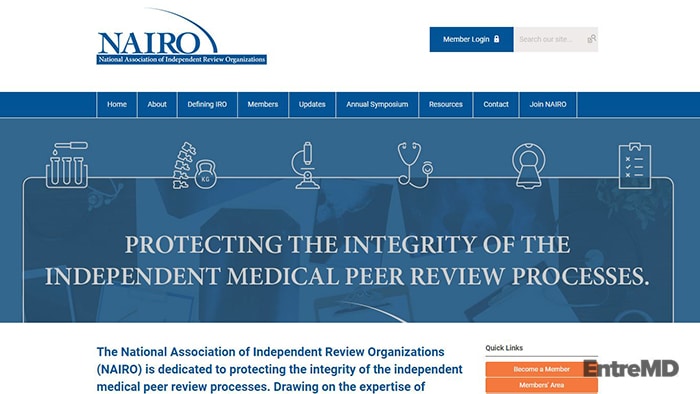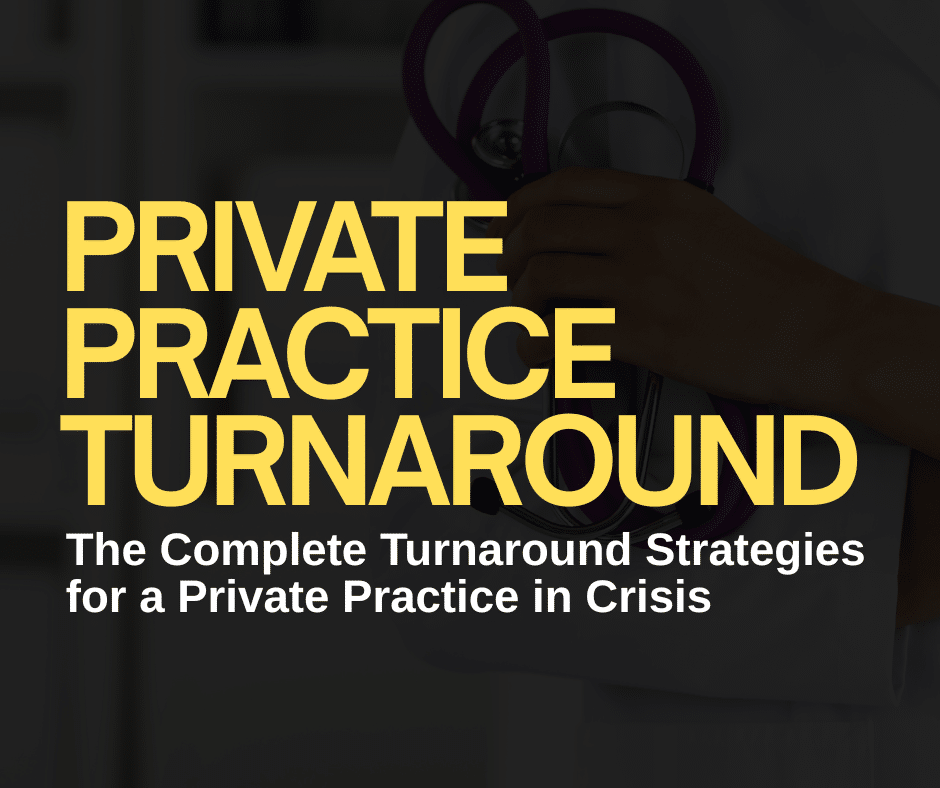There’s a great (and growing) demand for physicians who can review health insurance claims in the United States. As more people can afford health insurance, the country started to see a rise in the number of times claims were denied by an insurance company.
Individual states began to pass legislation that forced the insurance companies to allow an independent and external medical review to ensure these denied claims weren’t driven only by financial or business considerations. State and federal agencies then joined together to protect the individual’s right to have decisions about their access to medical care based on sound medical judgment.
That’s when the Affordable Care Act of 2010 came into place. It became federal law that an accredited independent review organization become involved if an individual’s health insurer refuses to pay a claim. In addition, HealthCare.gov requires that if a health insurer refuses to pay a claim or ends someone’s coverage, clients have the right to appeal the decision and to have it reviewed by a third party through an internal appeal or an external review.
Independent Medical Reviewers (IMRs)
If you’ve heard the terms peer review, independent medical review, hospital peer review, or medical peer review, they all refer to the same thing. Accredited physicians review a case and see whether a healthcare service is appropriate and medically necessary when insurance organizations have decided not to pay for treatment.
These reviews are done after the insurance company has denied a claim and the patient has asked for an internal review. If the internal review agrees with the original finding, the patient can ask for an independent review, and by federal law, they are entitled to get this.

In terms of healthcare, an IMR is an option for patients who have gone through all appeal options available in their health benefit plan. An IMR review offers an independent opinion that can sway the insurance company to pay for a treatment that the patient needs.
There are generally three steps in an appeal process:
- A first-level internal appeal
- A second-level internal appeal
- A third-level external appeal
It’s the third-level appeal that’s completed by an organization other than the health plan. A physician who isn’t involved in the case will look carefully through the documents to see if the claims are based on medical evidence and accepted standards of care.
Do These Reviews Make a Difference?
A study from Texas showed that 55% of patients who filed an IMR appeal got treatment the insurance company had decided not to pay for. These denied claims were either partly or completely overturned by the ruling, and when it came to mental health treatment, 70% of patients’ claims were granted.
Overall, it became clear that many insurers had “large gaps in their coverage and their guidelines for determining which treatments were acceptable or not.” The state could then fine-tune basic healthcare coverage requirements for its residents.

The benefits of IMRs are clear and include:
- Protection for patients.
- A positive impact on review plan processes.
- The reduction of medical services and procedures determined not to be necessary.
- Minimized waste of healthcare resources.
- Provision of an “unbiased, evidence-based external determination.”
One of the most common types of IMR is independent review organizations (IROs). These organizations perform IMRs to “establish the medical necessity or experimental and/or investigational status of treatments, and to evaluate other issues impacting appropriateness of medical care.”
Welcome to NAIRO
The National Association of Independent Review Organizations (NAIRO) was formed to “simplify the independent review organization application process as well as the independent medical peer review requirements across the country.”
NAIRO is “dedicated to protecting the integrity of the independent medical peer review processes.” They work with thousands of board-certified clinicians in the United States and “foster an evidence-based approach to reviews.”
It’s the only industry association representing IROs and received accreditation from the Utilization Review Accreditation Commission (URAC). URAC is the gold standard in this field, and they work with NAIRO to “track related legislation and regulatory standards, advance accreditation standards and assess emerging trends in IRO practices.”

The mandate of NAIRO is to:
- “Develop guidelines for solving common industry problems
- Promote standards for these reviews
- Educate consumers about their rights for claims appeal
- Help define the role of IROs in the evolving healthcare landscape.”
The highest accreditation for any IRO comes from URAC. The accreditation ensures that the IRO’s reviewers meet all the established qualifications, are free from any conflicts of interest, address “medical necessity,” and use reasonable timeframes for “standard and expedited peer reviews and appeals processes.”
When a consumer needs an independent medical review, using an IRO that’s been URAC-accredited gives them the confidence that their claim will be thoroughly and accurately looked at. An objective decision will be based on “accepted standards of care.”
Independent Review Organizations
To become an accredited IRO, companies must go through a four-phased process. They need to first complete the application forms and give all supporting documents. This phase usually takes several months.

The next three phases take about six months and include:
- A desktop review to familiarize themselves with audits of terms.
- An onsite review where management is interviewed about the organization and staff is observed performing their duties.
- A committee review by two URAC committees results in a written summary submitted to URAC’s Accreditation Committee for evaluation.
If that all goes well, an accreditation recommendation then passes along to URAC’s Executive Committee, who will give the necessary accreditation. Once this happens, the accreditation is good for two years.
To start the process, go to Independent Review Organization Accreditation Standards to buy their latest version.
Who Can Become an Independent Medical Reviewer?
Clinical reviewers include board-certified or licensed physicians, physician advisors, allied clinicians, and other healthcare professionals and legal specialists.

URAC sets the standards when it comes to awarding accreditation for reviewers. To become an independent medical reviewer, you need to:
- Hold a current, active, non-restricted U.S. medical license.
- Have at least five years of experience providing “direct clinical care” to patients.
- Have the same or similar specialty as the doctor(s) whose case you are reviewing.
- Have professional experience in the area of practice “that typically manages the medical condition, procedure, treatment, or issue under review.”
The standards set by URAC also require that “clinical reviewers are knowledgeable on the trends of current practice, stating that reviewers of external review cases must have experience providing direct clinical care to patients within the past three years (URAC standards, IR. 6).”
What is the Role of an Independent Medical Reviewer?
When an IRO receives an IMR request, they’ll assign the file to a licensed and credentialed clinical reviewer. They’ll choose a physician with the same or a similar specialty or subspecialty as the physician who treats the patient in the claim and one who can certify they have no conflict of interest. The reviewer will also need to certify that the review was done without bias against any disputing party.
Once a suitable clinician has been chosen, they’ll be sent electronic files to review. The types of files under review can include:
- Medical file reviews
- Utilization reviews
- Coding reviews
- Chart reviews
- Peer reviews
- Second opinions
- Underwriting reports
- Medical Necessity Determinations
- Concurrent and Retrospective reviews
- Disability opinions
- Pre-authorizations
The reviewer is looking for two essential factors. The first is whether the recommended service or treatment has been “approved by the FDA for the patient’s condition.”
The second factor is whether the evidence from the file supports “the expected benefits of the recommended or requested health care service or treatment is more likely than not to be beneficial to the covered person than any available standard health care services or treatment and the adverse risks of the recommended or requested health care service or treatment would not be substantially increased over those of available standard health care services or treatments,” according to the NAIC Model Act.
To get to this determination, the reviewer must read all the medical files and documents they’ve been sent and write a patient clinical history summary. They may interview the patient and will also need to include a description and source of the screening criteria.

The information provided to the reviewer includes:
- The covered person’s medical records.
- The attending physician’s recommendations.
- A summary of the patient’s clinical history.
- Consulting records.
- The terms of health benefit plan coverage.
- An analysis and explanation of the decision that includes a clinical basis, findings, and conclusions used to deny the claim.
- Any clinical review criteria that were used to make the determination.
- A description and the sources used to make the determination.
For example, in a Texas Department of Insurance case, the list of screening criteria and other clinical resources used to make the decision to deny a patient’s claim for their back injury included the following sources:
- ACOEM- American College of Occupational & Environmental Medicine Knowledgebase
- AHRQ- Agency for healthcare research and quality guidelines
- DWC- Division of Workers Compensation policies or guidelines
- European guidelines for management of chronic low back pain
- InterQual criteria
- Medical judgment, clinical experience, and expertise in accordance with accepted medical standards
- Mercy Center Consensus Conference guidelines
- Milliman Care Guidelines
- ODG- Official Disability Guidelines and treatment guidelines
- Presley Reed, the Medical Disability Advisor
- Texas Guidelines for chiropractic quality assurance and practice parameters
- TMF screening criteria manual
- Peer-reviewed, nationally accepted medical literature
Once the reviewer has read all the relevant information on the file, they’ll write a report. The report will generally follow an outline that includes:
- IRO case number.
- A description of the service(s) in dispute.
- A description of the qualifications of each physician who reviewed the decision.
- The reviewer’s recommendations on whether the treatment or service was appropriate and medically necessary.
- The reviewer’s listing of any recommended alternative medical treatments that may be more appropriate.
- A finding as to whether the denial of the claim should be upheld, overturned, or partially overturned.
While internal reviews can be challenged by the insurance payee, external appeal decisions are final and cannot be challenged.
Can Doctors Make Money Reviewing Health Insurance Claims?
Yes. According to NAIRO, the “future of independent medical review is bright.”
Once you clear away the complicated language, it becomes evident that if you are a board-certified doctor with a minimum of five years of clinical experience, you can offer your services as an independent medical reviewer and will be given assignments that match your specialty or sub-specialty.
You’ll need to be able to read through the documentation and write a clear and concise report in a specified, and sometimes quick, amount of time. If you’re a good clinician and can write an excellent report, this may be a job for you.
Who wants you?
- Independent Review Organizations
- Health insurers
- Disability insurers
- Life insurers
- Casualty insurers
- Workers’ Compensation insurers
- Self-insureds
- Life insurance settlement organizations
- Medical management companies
- Utilization review companies
- Third-party administrators and hospitals
SEAK is an organization that provides training and support to physicians who are looking to use their expertise in non-clinical ways. They offer training for doctors to “diversify [their] revenue base through disability and file review consulting.”
Along with their How to Start, Build and Run a Successful Disability and File Review Consulting Practice, you can be added to their SEAK File Review Directory, where IROs or other insurance companies go to find competent, independent medical reviewers.

The 12-hour streaming, on-demand course includes:
- One-year streaming license
- 348-page coursebook
- 100+ referral sources
- Ability to submit questions
- Feedback on file review
- Private 15-20 minute phone call with SEAK
- Discount on SEAK File Review Directory
- Up to 11.75 CME credits
You can do this type of work from home with zero overhead on your schedule. You may want to start working evenings and weekends part-time to supplement your income or switch from purely clinical work to becoming a full-time independent medical reviewer, working for an IRO, or as a freelance reviewer.
If you like to work independently and on your own, this could be an ideal part- or full-time job. You rarely have to testify in court, and the work is low-stress and low-risk.
Most independent medical reviewers are paid by the hour, and depending on your specialty, you can earn up to $250 to $300 per hour. Many hired positions in this field of work come with competitive compensation packages and benefits.
If you’d like to join the NAIRO membership team and network with other members, you can check out their tiered membership costs and benefits page. They offer full, associate, and affiliate membership tiers ranging from $3,500 per year down to $500 per year for an individual member.
All members in good standing are listed on their members page. Members can participate in monthly member conference calls and NAIRO’s annual symposium. NAIRO also has a subscription to LexisNexis State Net, which allows members to get updates on legislative and regulatory changes.
So, if you’re looking for interesting work that keeps you on the cutting edge of what’s happening in medicine in a way that lets you set your own schedule and financial goals, becoming an independent medical reviewer may be perfect for you.

